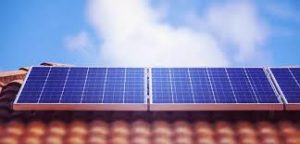Alinta Energy says it is looking at powering new suburban developments with a mixture of solar power and “distributed” geothermal energy, drilling 50 metres below the ground to provide heating and cooling needs for the homes in the district.

The technology will act as a sort of giant heat pump, it says, and the combination of solar on the rooftop and geothermal under the ground could provide all of the suburb’s power needs, although it is likely that initial projects at least will stay on the grid “for the comfort” of households.
The plans were briefly foreshadowed by Alinta CEO Jeff Dimery at the Energy Disruption conference in Sydney hosted by RenewEconomy this week.
Dimery says he believes it will be the first time that the technology will be used this way in Australia at residential level for heating and cooling (although it should be pointed out that the town of Birdsville in Queensland uses geothermal energy for electricity, and has done for some time, and many homes have individual heat pumps).
Dimery’s vision is to target new sub divisions, initially in New South Wales, where Alinta would drill a hole about 50m deep, insert a sleeve, a two-way return pipe and put a heat pump at the outlet which would generate heat and cooling for the homes.
He’s coy about the exact details, and the location, one because Alinta is in the midst of an IPO process and also because the idea requires the purchase of a company that is not yet complete.
“It will makes a big difference for homes, and their heating and cooling, because it reduces the energy requirement for household by up to 50 per cent,” Dimery says.
“Initially, the customers will want to stay connected, but they might not need to with solar panels on the roof and geothermal in the ground”, and some battery storage.
Alinta has been selling a solar product through a financing option with ANZ Bank and plans to introduce that to eastern states soon. “We want to be seen as an energy company rather than a gas company,” he said, noting the company is looking to get a 25 per cent market share of solar in W.A.
Alinta also offers a battery storage solution.
Dimery says the company is not pushing the hybrid solution to consumers, waiting for the offer to be “economic.” But “when it’s at the crossover point we will be very keen to push it.” When told that new research suggests that crossover point could be next year, he said: “Great.”
This article was originally published on RE sister site One Step Off The Grid. To sign up for the weekly newsletter, click here.








